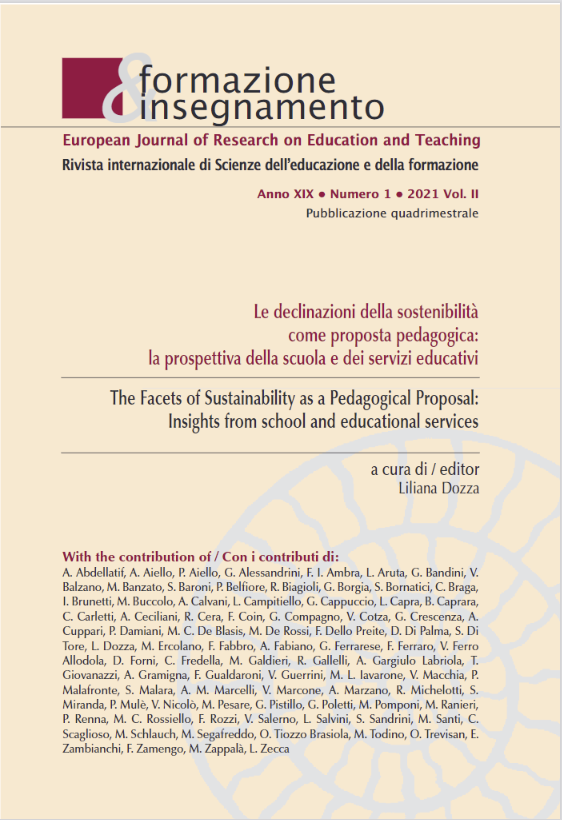Non-Italian male and female students in secondary school between inclusion and risk of marginalisation. Results from qualitative research before and during the pandemic by Covid 19
DOI:
https://doi.org/10.7346/-fei-XIX-01-21_40Abstract
The growing number of male and female students of non-Italian origin and many differences that exist within schools (gender, cultural, ethnic, religious, learning styles) have contributed to an increase in teaching activities and teacher training courses aimed at promoting forms of inclusion and combating discrimination against differences. At the same time, pedagogical research supports this trend and supporting forms of education for respect and equality with solid theories. This paper will describe and analyse a qualitative research conducted among teachers and classes in three secondary schools in Tuscany, aimed at finding out the perception that teachers and students have of school inclusion towards gender and ethnic-cultural differences. In the light of the data that emerged, there was a continuation of the research during the first phase of the health emergency, in the spring of 2020, to find out what had changed in teachers and students’ life during the period of distance learning, which involved the suspension of many projects and activities related to daily teaching.
Downloads
Published
How to Cite
Issue
Section
License
Copyright (c) 2021 Pensa MultiMedia

This work is licensed under a Creative Commons Attribution 4.0 International License.
Formazione & insegnamento is distributed under Attribution 4.0 International (CC BY 4.0).
For further details, please refer to our Repository & Archiving Policy, as well as our Copyright & Licensing Terms.





